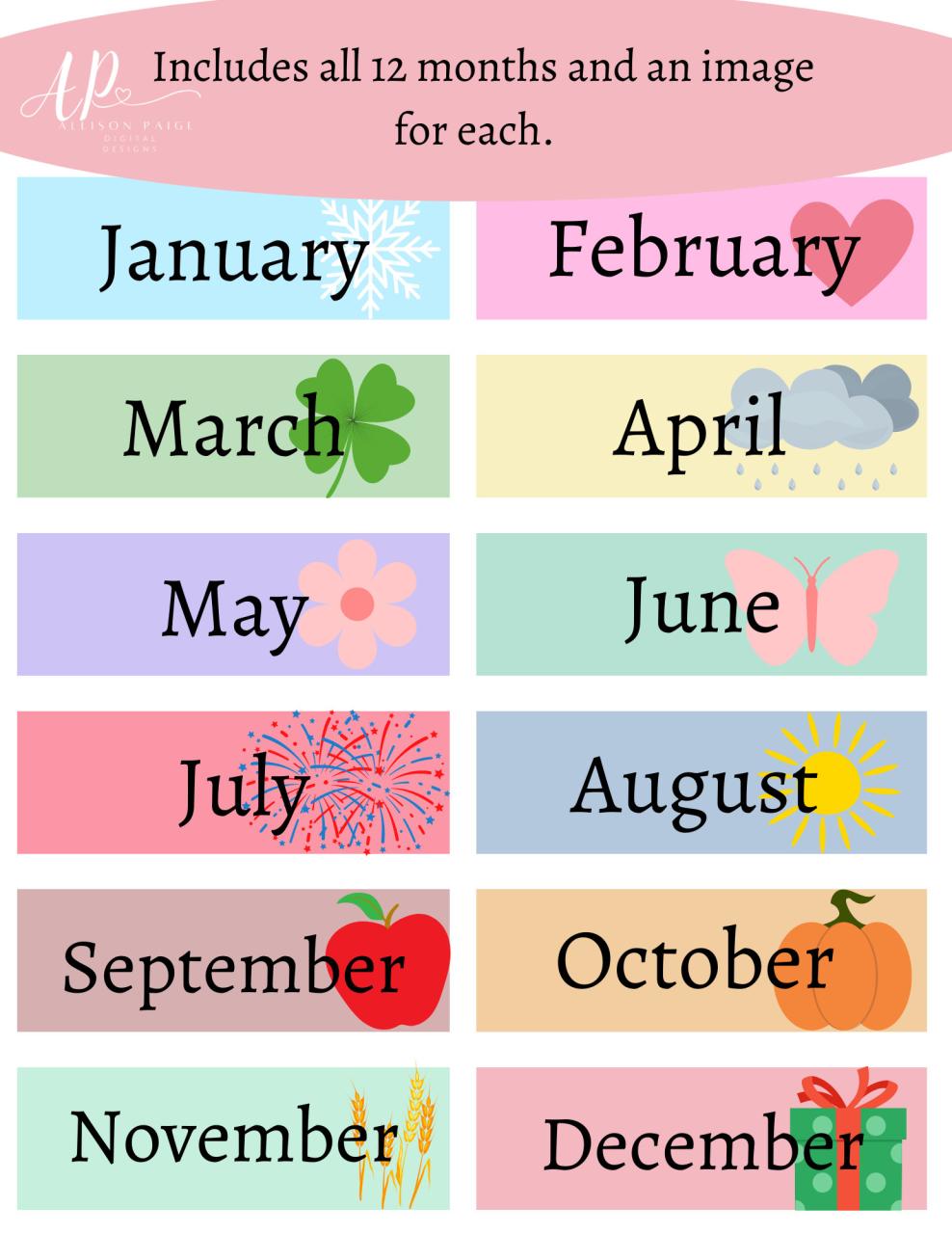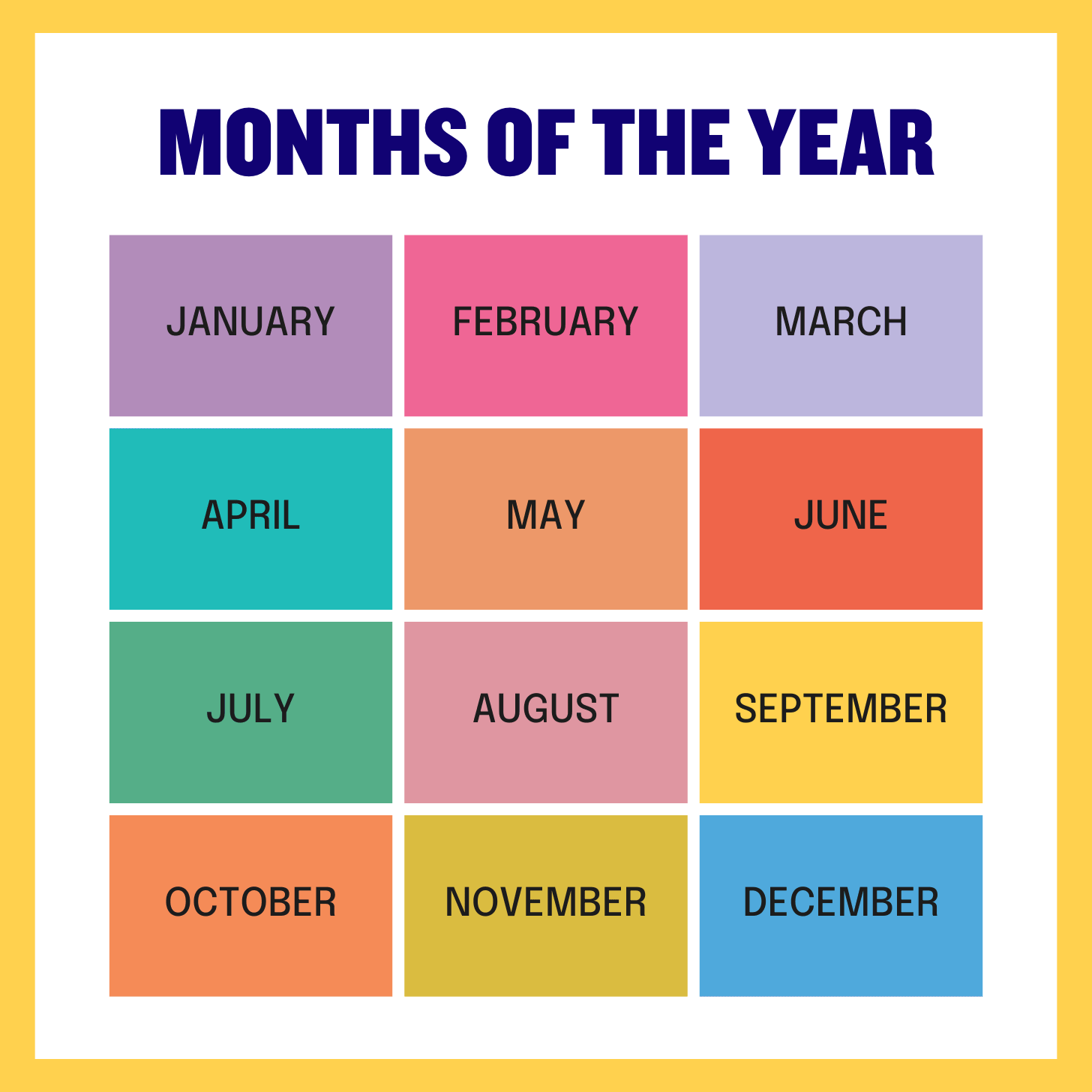Embarking on the journey of learning Italian is a delightful experience, opening doors to a rich culture, breathtaking art, and melodious conversations. A fundamental building block in this linguistic adventure is mastering the "mesi dell’anno" – the months of the year. Beyond mere vocabulary, understanding Italian months involves grasping crucial grammatical rules, cultural nuances, and practical applications that will significantly enhance your communication skills.
This comprehensive guide will walk you through each month, its pronunciation, grammatical considerations, common usage, and tips for seamless integration into your Italian vocabulary. By the end, you’ll not only know the months but also feel confident using them in various contexts.
Why Learn Italian Months?
Before diving into the list, let’s briefly touch upon why this particular set of vocabulary is so vital:
- Practical Communication: From scheduling appointments and planning trips to discussing birthdays and holidays, months are indispensable for everyday conversation.
- Cultural Understanding: Many Italian traditions, festivals, and historical events are tied to specific months. Knowing them helps you appreciate and engage with Italian culture more deeply.
- Grammar Foundation: Learning months provides an excellent opportunity to practice definite articles, prepositions of time, and sentence structure.
- Foundation for Dates: Months are the cornerstone for expressing dates, a crucial skill for any language learner.
The Mesi dell’Anno: A Month-by-Month Exploration
Let’s explore each month, focusing on pronunciation, common associations, and example sentences.
1. Gennaio (January)
- Pronunciation: jen-NAH-yo
- Etymology: Derived from Latin Ianuarius, named after Janus, the Roman god of beginnings and transitions.
- Associations: Marks the start of the new year (Capodanno). Often a cold month, associated with winter sports and post-holiday sales.
- Example: A gennaio fa molto freddo in montagna. (In January it’s very cold in the mountains.)
2. Febbraio (February)
- Pronunciation: feb-BRAH-yo
- Etymology: From Latin Februarius, referring to februa, a purification ritual held on February 15th in ancient Rome.
- Associations: The shortest month. Known for Carnevale (Carnival), especially famous in Venice and Viareggio, and Valentine’s Day (San Valentino).
- Example: Il Carnevale di Venezia si tiene a febbraio. (The Carnival of Venice takes place in February.)
3. Marzo (March)
- Pronunciation: MAR-tso
- Etymology: From Latin Martius, named after Mars, the Roman god of war. It was the original first month of the Roman calendar.
- Associations: Often marks the transition from winter to spring (l’inizio della primavera). Weather can be unpredictable ("marzo pazzo" – crazy March).
- Example: La primavera inizia a marzo. (Spring begins in March.)
4. Aprile (April)
- Pronunciation: ah-PREE-leh
- Etymology: From Latin Aprilis, possibly from aperire (to open), referring to the opening of buds and flowers.
- Associations: Known for Easter (Pasqua), which can fall in March or April. Often a month of pleasant, warming weather and April Fool’s Day (Pesce d’Aprile).
- Example: Il tempo ad aprile è spesso variabile. (The weather in April is often changeable.)
5. Maggio (May)
- Pronunciation: MAH-joh
- Etymology: From Latin Maius, named after Maia, a Roman goddess of fertility and growth.
- Associations: A beautiful month, full of flowers and sunshine. Often considered an ideal time for travel in Italy before the intense summer heat.
- Example: Maggio è il mio mese preferito per i fiori. (May is my favorite month for flowers.)
6. Giugno (June)
- Pronunciation: JOO-nyoh
- Etymology: From Latin Iunius, named after Juno, the Roman goddess of marriage and childbirth.
- Associations: The official start of summer (l’inizio dell’estate). Many schools finish, and beaches begin to fill up. Republic Day (Festa della Repubblica) is on June 2nd.
- Example: Andremo al mare a giugno. (We will go to the beach in June.)
7. Luglio (July)
- Pronunciation: LOO-lyoh
- Etymology: From Latin Iulius, named in honor of Julius Caesar, who was born in this month.
- Associations: Peak summer month, often very hot, especially in the south. A popular time for beach holidays and outdoor festivals.
- Example: A luglio fa molto caldo a Roma. (In July it’s very hot in Rome.)
8. Agosto (August)
- Pronunciation: ah-GOH-stoh
- Etymology: From Latin Augustus, named in honor of Emperor Augustus.
- Associations: The quintessential Italian holiday month. Many businesses close for Ferragosto (August 15th), a major public holiday, as Italians head to the coast or mountains. Cities can feel empty.
- Example: Molti italiani vanno in vacanza ad agosto. (Many Italians go on holiday in August.)
9. Settembre (September)
- Pronunciation: set-TEM-breh
- Etymology: From Latin septem (seven), as it was the seventh month of the original Roman calendar.
- Associations: Marks the end of summer and the beginning of autumn (l’inizio dell’autunno). Schools reopen, and harvest season begins (vendemmia).
- Example: Le scuole riaprono a settembre. (Schools reopen in September.)
10. Ottobre (October)
- Pronunciation: ot-TOH-breh
- Etymology: From Latin octo (eight), as it was the eighth month.
- Associations: A beautiful autumn month, known for fall foliage, mushroom hunting, and grape harvests. Halloween is becoming more popular.
- Example: Ad ottobre le foglie cambiano colore. (In October the leaves change color.)
11. Novembre (November)
- Pronunciation: noh-VEM-breh
- Etymology: From Latin novem (nine), as it was the ninth month.
- Associations: Often a grey and rainy month, marking the full onset of autumn. All Saints’ Day (Ognissanti) is on November 1st.
- Example: Novembre è spesso un mese piovoso. (November is often a rainy month.)
12. Dicembre (December)
- Pronunciation: dee-CHEM-breh
- Etymology: From Latin decem (ten), as it was the tenth month.
- Associations: The month of Christmas (Natale) and New Year’s Eve (San Silvestro). Cities are adorned with festive lights and markets.
- Example: A dicembre festeggiamo il Natale. (In December we celebrate Christmas.)
Grammatical Essentials for Months in Italian
Understanding these grammatical points is key to using months correctly:
1. Gender of Months
All months in Italian are masculine. While you won’t typically use an article directly before a month (unless specified, see below), it’s important to know this for agreement with adjectives or other grammatical constructions.
- Example: Il freddo gennaio. (The cold January.) – Here, "freddo" (cold) is masculine singular to agree with "gennaio."
2. Capitalization
Unlike in English, Italian months are not capitalized unless they begin a sentence.
- Correct: Vado in Italia a luglio. (I go to Italy in July.)
- Incorrect: Vado in Italia a Luglio.
- Correct (at sentence start): Luglio è un mese caldo. (July is a hot month.)
3. Using Articles with Months
Generally, you do not use a definite article (il, la, i, le) directly before a month when simply stating when something happens.
- Correct: Viaggio a marzo. (I travel in March.)
- Incorrect: Viaggio il marzo.
However, articles are used in specific situations:
- To specify a particular month: When you want to emphasize that specific month or a month within a certain context.
- Example: Il marzo del 2023 è stato molto piovoso. (March of 2023 was very rainy.)
- Example: Preferisco il maggio italiano. (I prefer Italian May.)
- When using adjectives: If you describe the month with an adjective, the article often appears.
- Example: Il prossimo gennaio andremo a sciare. (Next January we will go skiing.)
- With phrases like "il mese di…" (the month of…)
- Example: Il mese di aprile è imprevedibile. (The month of April is unpredictable.)
4. Prepositions of Time with Months
This is one of the most crucial aspects. Italian uses different prepositions depending on the context:
-
aorin(often interchangeable for months, butais more common when referring to the month itself):- Used to state in which month something happens.
ais very common for general month references. - Example: Partiamo a luglio. (We leave in July.)
- Example: Il mio compleanno è a settembre. (My birthday is in September.)
- Example: In agosto fa molto caldo. (In August it’s very hot.) –
inis also perfectly acceptable.
- Used to state in which month something happens.
-
da(since/from):- Used to indicate a starting point in time.
- Example: Lavoro qui da marzo. (I’ve been working here since March.)
-
per(for):- Used to indicate a duration.
- Example: Andremo in vacanza per un mese, ad agosto. (We will go on holiday for a month, in August.)
-
di(of):- Used in phrases like "il mese di…"
- Example: Il mese di dicembre è festivo. (The month of December is festive.)
Integrating Months with Dates and Seasons
1. Expressing Dates
When combining months with days to form dates, here’s the typical structure:
di or
- For the first day of the month, you use the ordinal number "primo."
- Example: Il primo di gennaio. (January 1st.)
- For all other days, you use cardinal numbers.
- Example: Il dieci aprile. (April 10th.)
- Example: Il venticinque dicembre. (December 25th.)
You can also use the structure:
- Example: 15 agosto 2024. (August 15, 2024.)
2. Seasons (Le Stagioni)
Months naturally group into seasons. Learning these can help contextualize the months.
- Primavera (Spring): Marzo, Aprile, Maggio
- Estate (Summer): Giugno, Luglio, Agosto
- Autunno (Autumn/Fall): Settembre, Ottobre, Novembre
- Inverno (Winter): Dicembre, Gennaio, Febbraio
Prepositions for seasons:
inord'(before a vowel) for seasons.- Example: In primavera vado in bicicletta. (In spring I go cycling.)
- Example: D’estate andiamo al mare. (In summer we go to the beach.)
Common Phrases Involving Months
- Che mese è? (What month is it?)
- Che giorno è oggi? (What day is today?) – You might answer with the day and month.
- Quando è il tuo compleanno? (When is your birthday?)
- Risposta: È a marzo. (It’s in March.) or È il quindici marzo. (It’s March 15th.)
- Qual è il tuo mese preferito? (What is your favorite month?)
- Risposta: Il mio mese preferito è maggio. (My favorite month is May.)
- Ogni mese… (Every month…)
- Il mese prossimo… (Next month…)
- Il mese scorso… (Last month…)
- Questo mese… (This month…)
Tips for Mastering Italian Months
- Repetition and Pronunciation Practice: Say the months aloud repeatedly. Focus on the distinct Italian sounds.
- Flashcards: Create flashcards with the Italian month on one side and the English equivalent (and perhaps a simple example sentence) on the other.
- Contextual Learning: Try to use the months in sentences as often as possible. Think about events in your life that happen in specific months.
- Associate with Holidays/Events: Link each Italian month to a significant Italian holiday or a personal event (e.g., "Gennaio – Capodanno," "Agosto – Ferragosto," "Dicembre – Natale").
- Listen and Imitate: Pay attention to how native speakers use months in conversations, songs, or news reports.
- Practice Dates: Regularly practice saying today’s date, your birthday, or other important dates in Italian.
- Mnemonics: If a month’s name is very different from English, try to create a mental trick or a silly phrase to help you remember it.
- Calendar Immersion: Change your calendar or digital device language to Italian for a while.
Conclusion
Learning the months of the year in Italian is a foundational step that will unlock numerous possibilities for communication and cultural immersion. From understanding festival dates to planning your next Italian adventure, the "mesi dell’anno" are an indispensable part of your vocabulary. Remember to pay attention to pronunciation, the lack of capitalization, the masculine gender, and the correct usage of prepositions. With consistent practice and a little dedication, you’ll soon be navigating Italian time like a native speaker. In bocca al lupo! (Good luck!)


